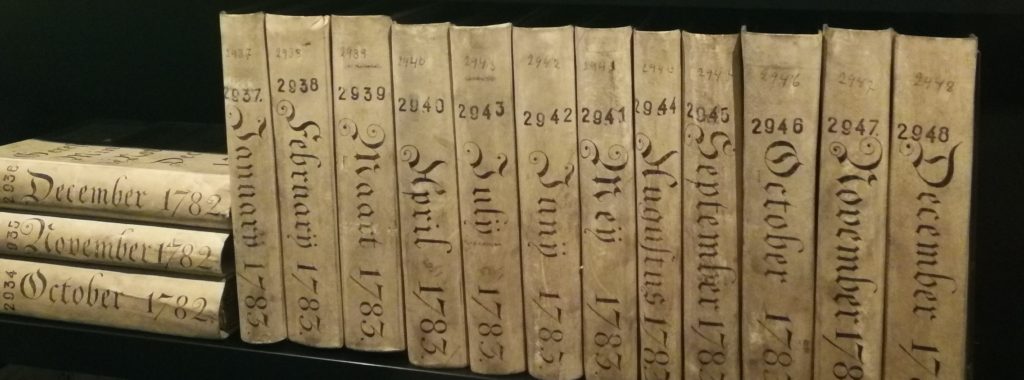Resolutions are the day-to-day decisions of the States General: the supreme central political institution in the Dutch Republic between 1576 and 1796. The decisions this institution reached constitute the most important source for the early modern political history of the Netherlands. Nevertheless, they have never been fully published. Until now.

The Dutch States General
This assembly, consisting of representatives of the provinces, met six days a week at the ‘Binnenhof’ in The Hague. Seated around a big table, the deputies tried to reach agreements about all kinds of affairs related to the national interest: foreign affairs, military defense, overseas trade, the government of the Generality Lands (areas which were under the direct rule of the States General), jurisdiction, religion and collective finances. These were complicated matters, as the provinces were sovereign but at the same time had to join forces: ‘Unity makes strength’ (Eendracht maakt macht / Concordia res parvae crescunt).

The resolutions
Still, the States General regularly reached agreements. Countless important political decisions were taken. It has been estimated that there are about one million resolutions in total. All those decisions were documented by the griffier (chief clerk). Clerks then copied the resolutions which were bound in volumes per year. Together, these resolution volumes constitute the key to the enormous (1200 meters long) archives of the Dutch States General. These archives also contain other documents such as letters, petitions, treaties and charters.
The resolution volumes are chronologically ordered and follow a fixed pattern. First, the date of the session and a list of all the attendants and the president are recorded. Then, all resolutions that were taken on that day are listed. Sometimes, an index is included in the beginning of the resolution book. The resolution itself consists of:

- The proposition (propositie/ matter), most commonly introduced with the phrase ‘has been read at the meeting…’ (‘Sijnde ter vergaderinge gelesen…’), followed by the details, involved persons etc.
- The deliberation (beraadslaging/ discussion), the propositions were orally deliberated, what was said exactly was not documented.
- The resolution (besluit/decision), often introduced with the phrase ‘has after deliberation been agreed upon and understood’ (‘Is nae deliberatie goetgevonden ende verstaen …’).
Additionally, there are three different kinds of resolution series: the ordinary (ordinaris/regular), secret (secrete) and particular (particuliere) resolutions (the latter belong to a certain subject, such as the Great Assembly of 1651). From 1702 onwards, only the ordinary resolutions were printed, the secret resolutions continued to be handwritten.
Previous Editions
Since 1910 historians of the Huygens Institute (and precursors) have worked on the publication of the resolutions of the Dutch States General: first in print (‘the green books’) and from 1998 to 2011 digitally. These editions contained radical adaptations of the original resolutions. For example, the resolutions in these editions were summarized in modern Dutch. However, in more than a century only a quarter of the resolutions was published: those from the period 1576-1630.
On the website Resources of the Huygens Institute (insert link) the summaries of the resolutions between 1576 and 1630 have been published in a searchable edition.
The archives of the Dutch States General, which include the resolutions, are kept in the Dutch National Archives in The Hague (press here for the inventory).
Towards online access to all resolutions
In the project REPUBLIC we use machine learning and crowdsourcing with the goal of publishing all resolutions from 1576 to 1796 in a fulltext format. Both the handwritten and the printed resolutions will be digitized as well as the ordinary, secret and particular series. In order to do this, we use the neat versions of the resolutions composed by the clerks instead of o the draft-versions of the griffier that were used for earlier editions.